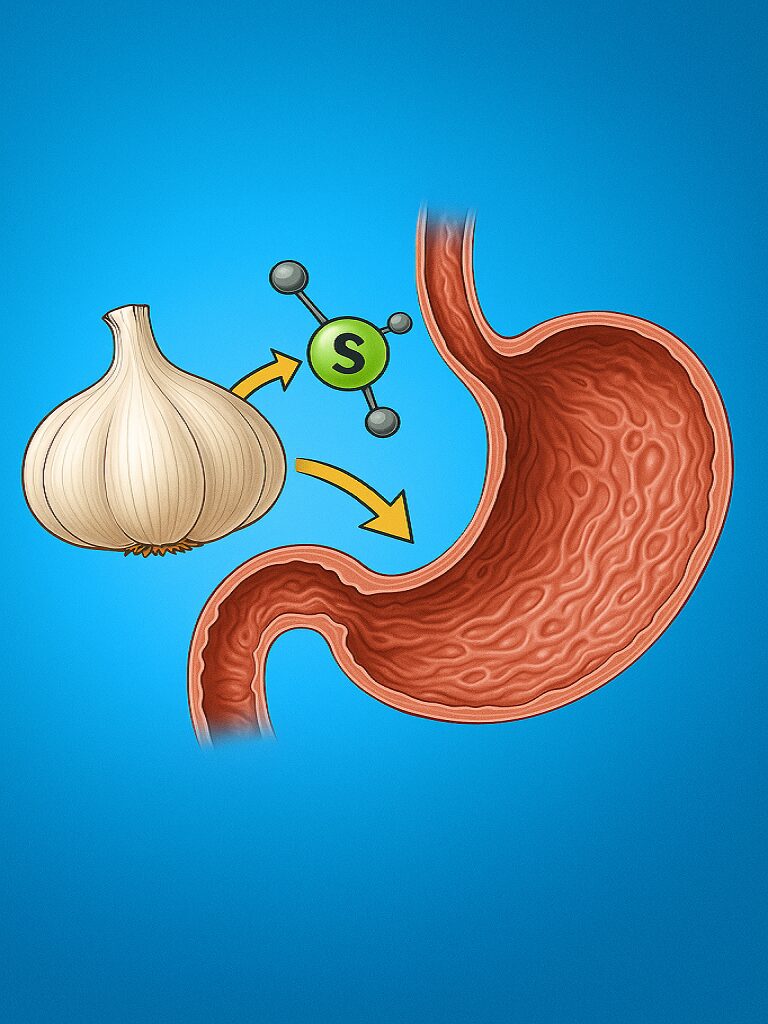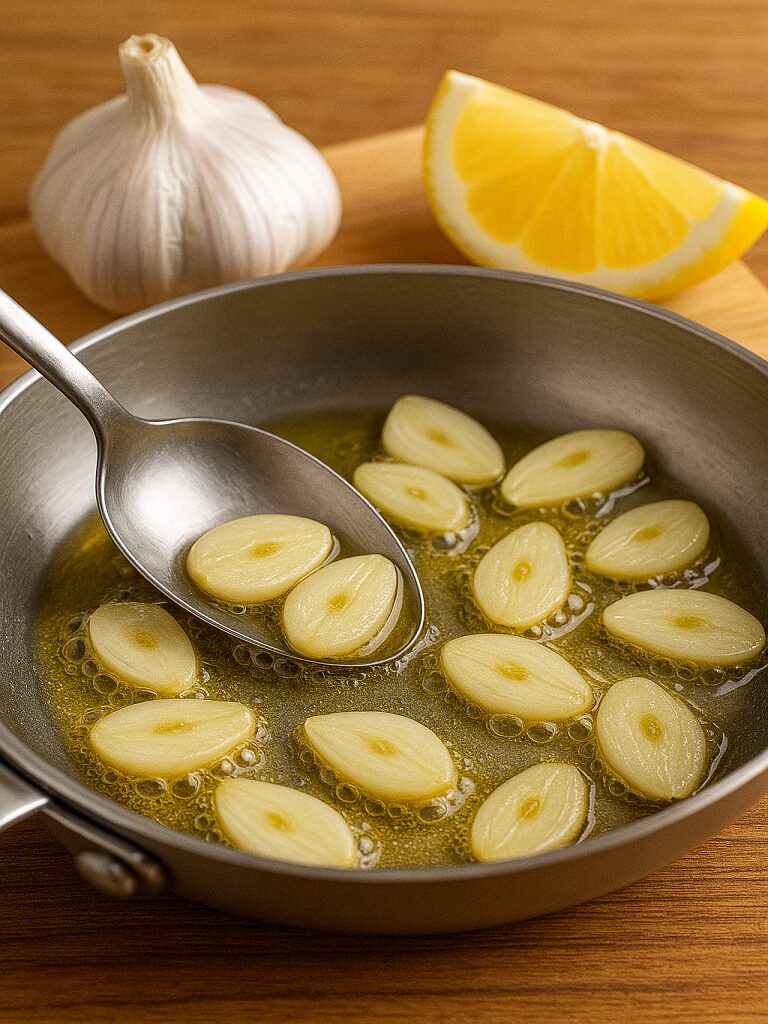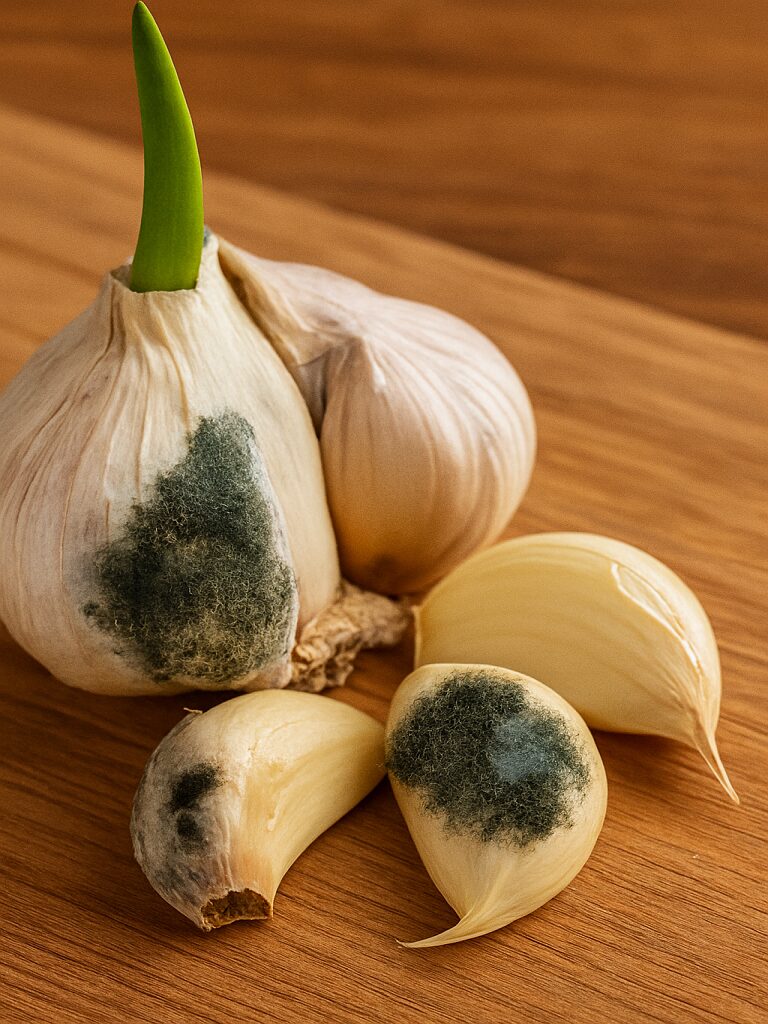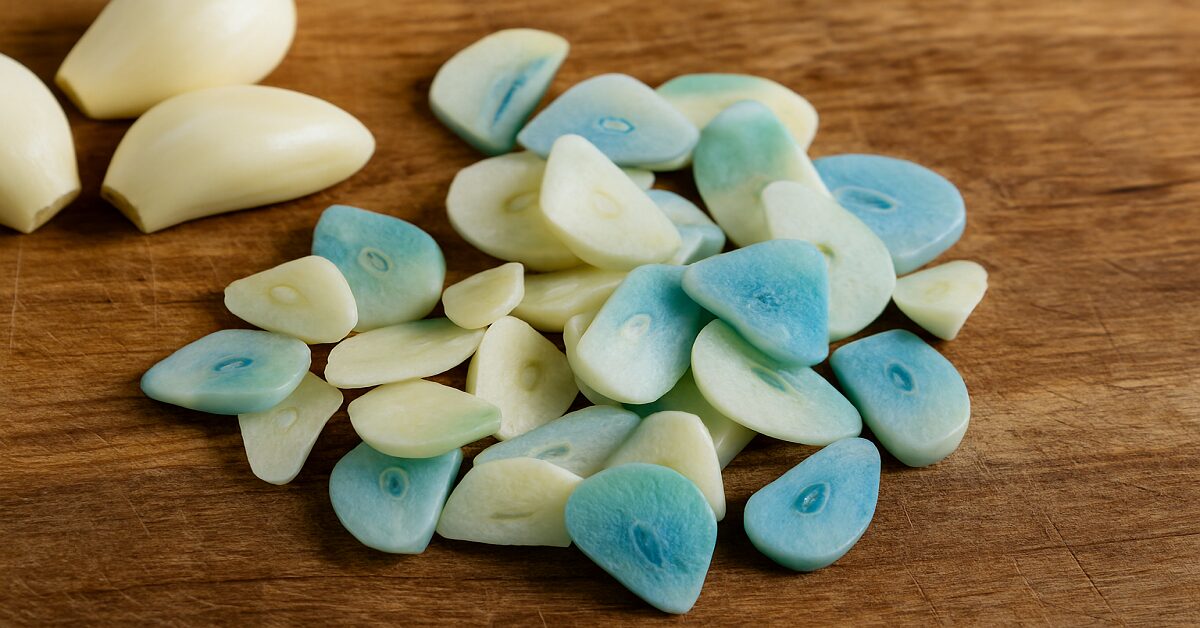You’re halfway through cooking your signature dish. The garlic is sizzling, the aroma is fantastic, and then you see it. Blue? Has your garlic turned blue? For a moment, you wonder if you’ve poisoned dinner, ruined the recipe, or opened some strange garlic portal. Don’t panic, you’re not alone, and no, your garlic isn’t haunted. This strange color change is more common than you think, and the reason is fascinating.
In this guide, we’ll unpack exactly what kitchen mistake makes your garlic turn blue, why it happens, and how to prevent it like a pro. Stick around—you’re about to become the person who cooks garlic correctly and explains the science at the dinner table.
Why Garlic Turns Blue or Green: The Science Explained

Before we blame our cooking skills, here’s the real reason your garlic goes blue:
The Science
When garlic is crushed, chopped, or minced, it releases an enzyme called alliinase, which starts a chain reaction that creates sulfur compounds (yes, the ones that give garlic its smell and flavor). When these sulfur compounds react with:
- Acids (like lemon juice or vinegar)
- Metals (especially copper or aluminum)
- Cold temperatures
…they can form pigments known as pyrroles — responsible for that unexpected blue or green color.
In some cultures, people intentionally create blue garlic for pickling — it’s considered beautiful, not a mistake!
What Kitchen Mistakes Cause Garlic to Turn Blue?
Let’s talk about real kitchen habits. These are the sneaky culprits that make your garlic go psychedelic:
1. Adding Acid Too Early
When garlic is immediately tossed into something highly acidic (like vinegar, lemon juice, or even tomatoes), the pigment reaction kicks off immediately.
2. Cooking in Reactive Metal Cookware
Using aluminum or copper pans can cause metal ions to interact with garlic’s sulfur compounds. Result? Blue-green garlic.
3. Using Very Fresh or “Wet” Garlic
Garlic harvested too recently (especially “wet” garlic or garlic that hasn’t cured) has more active enzymes and moisture—making it more chemically reactive.
4. Cold-Storing Garlic Before Cooking
Storing garlic in the fridge can change its chemical structure and make it more likely to react when introduced to heat and acid.
How to Prevent Garlic From Turning Blue

Turning your garlic into a blue-green science experiment might be fun once—but it gets old fast. Let’s stop the color change before it starts. Here’s how to keep your garlic golden and gorgeous every time.
Use Non-Reactive Cookware
Avoid cooking garlic in aluminum or copper pans. These metals can react with garlic’s natural sulfur compounds, causing the dreaded blue. Stick to stainless steel, cast iron, or enamel-coated cookware.
Add Acidic Ingredients Later
Cooking garlic with lemon juice, vinegar, or tomatoes? Wait until the garlic has sautéed or softened first. This reduces the chances of it reacting and changing color.
Use Mature (Not Young) Garlic
Fresh, “wet” garlic has higher enzyme and moisture levels—making it more reactive. Choose dry, cured garlic from the store, or let fresh bulbs age before cooking.
Don’t Refrigerate Your Garlic
Storing garlic in the fridge increases its moisture and alters its internal chemistry. Keep it cool, dry, and at room temperature—preferably in a mesh bag or open basket for airflow.
Blanch Garlic (Optional, But Smart)
If you’re working with fresh garlic or making pickles, blanch the cloves in hot water for 30–60 seconds. This slows down the enzyme reaction that causes the color change.
Cook Garlic Gently First
The heat helps deactivate the alliinase enzyme that sparks the blue reaction. Let garlic cook in oil or butter before mixing it with acids or liquids.
Is Blue Garlic Safe to Eat?
When your garlic turns blue, the most crucial question is: Can you still eat it? Let’s put your mind at ease.
Yes, Blue Garlic Is Safe to Eat
The blue color change in garlic is purely cosmetic. It happens due to a natural chemical reaction between the sulfur compounds in garlic and acids or metals. There’s no harm in consuming blue garlic, and it won’t alter the flavor.
When Should You Avoid Eating Garlic?

While blue garlic is harmless, there are instances where garlic should not be consumed. Here’s what to look out for:
1. Mold
If you see fuzzy or black mold growing on garlic cloves, that’s a sign that it’s gone bad. Moldy garlic can pose a health risk, so toss it out immediately.
2. Strong or Sour Odor
Garlic that has turned blue due to a chemical reaction will still smell like garlic. Nevertheless, if it starts to smell sour, rotten, or off, it’s a sign that the garlic is spoiled.
3. Softness or Discoloration Beyond Blue
If the garlic has turned mushy or shows other signs of discoloration beyond the blue hue, it’s time to discard it. Fresh garlic should be firm and dry.
4. Sprouting
Garlic cloves that have started to sprout green shoots are still safe to eat, but the taste may be more bitter. While not harmful, sprouted garlic might not be as flavorful, so remove the shoots if desired.
Garlic Turning Blue in Pickles? Here’s Why
Garlic turning blue can be particularly noticeable when you’re making homemade pickles. But why does this happen, and should you be concerned? Let’s explore the reason behind this kitchen phenomenon.
The Science Behind Blue Garlic in Pickles
When garlic is exposed to vinegar or other acidic ingredients (essential in pickling), it can trigger the same sulfur compound reaction that causes garlic to turn blue. The garlic’s enzymes interact with the acidity, especially in fresh, unaged garlic, creating those blue or green pigments.
Quick Tip: This reaction is likelier with young or immature garlic that has not had time to cure or dry out thoroughly.
Why Does It Happen More Often in Pickles?
Pickling typically involves high amounts of acidic liquids—whether vinegar, lemon juice, or citrus-based brines. The high acidity in these salty solutions can quickly react with the sulfur in raw garlic. Furthermore, garlic doesn’t need to cook for long or interact much with other ingredients because it is usually added raw or lightly cooked.
The Bottom Line
So, if your garlic turns blue, don’t panic! It’s a natural reaction caused by sulfur, acids, and metals. The color change might surprise you, but it doesn’t change how your garlic tastes or how safe it is to eat. Using some easy tips, you can stop this problem and ensure your garlic stays golden and just right whenever you cook.
Remember, using non-reactive cookware, adding acidic ingredients later, and storing garlic properly are your best defenses against the blue garlic surprise. With just a little awareness, you’ll master cooking garlic without turning it into a colorful science experiment.
Now that you know why garlic turns blue and how to stop it, why not take your cooking to the next level? Explore more tips and tricks on our blog to ensure your kitchen is always prepared for success! Don’t forget to share your cooking experiences and any blue garlic stories with us in the comments below!
Like this article? Subscribe to our newsletter for more kitchen ideas and food hacks straight to your inbox!




